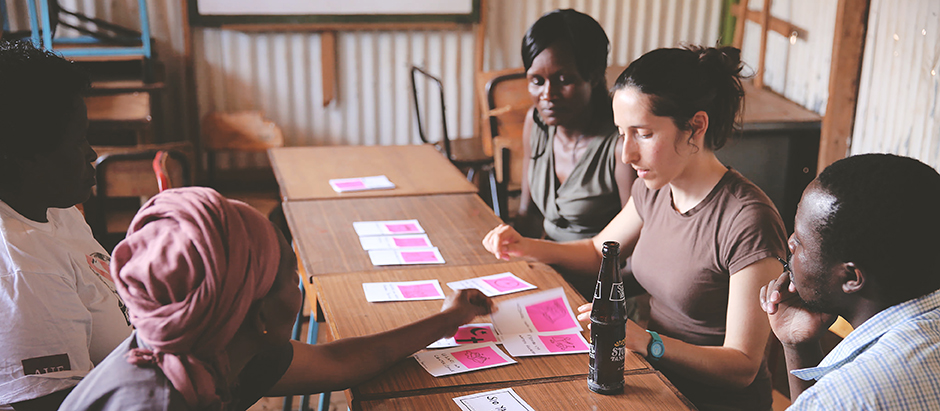Human-Centered Design

WIRED: What innovation do you think is changing the most lives in the developing world?
MELINDA GATES: Human-centered design. Meeting people where they are and really taking their needs and feedback into account. When you let people participate in the design process, you find that they often have ingenious ideas about what would really help them. And it’s not a onetime thing; it’s an iterative process.”
— Wired Magazine November 2013
Human-centered design is a creative approach to problem solving and the backbone of our work at IDEO.org. It’s a process that starts with the people we’re designing for and ends with new solutions that are tailor-made to suit their needs. Human-centered design is generative and iterative, a dynamic approach to understanding people's desires and aspirations and then designing feasible, viable solutions that satisfy them. We learn so that we may design; we design so that we may learn.
When working on a challenge as difficult as eradicating poverty, it all comes down to truly understanding the people we’re designing for. What are their needs, their hopes, their aspirations, their fears? To be sure that our work will make a difference in their lives, we have to talk directly to them and let their insights, their perspectives, their lives fuel our designs.
But merely practicing human-centered design ourselves isn’t enough. A key pillar of IDEO.org’s mission is to spread this kind of creative problem-solving to the social sector at large. We know that our process is crucial to arriving at innovative solutions, and we want everyone making use of it. Design Kit is our suite of teaching tools, a multi-platform approach to sharing, teaching, and empowering everyone to use design to fight poverty.

